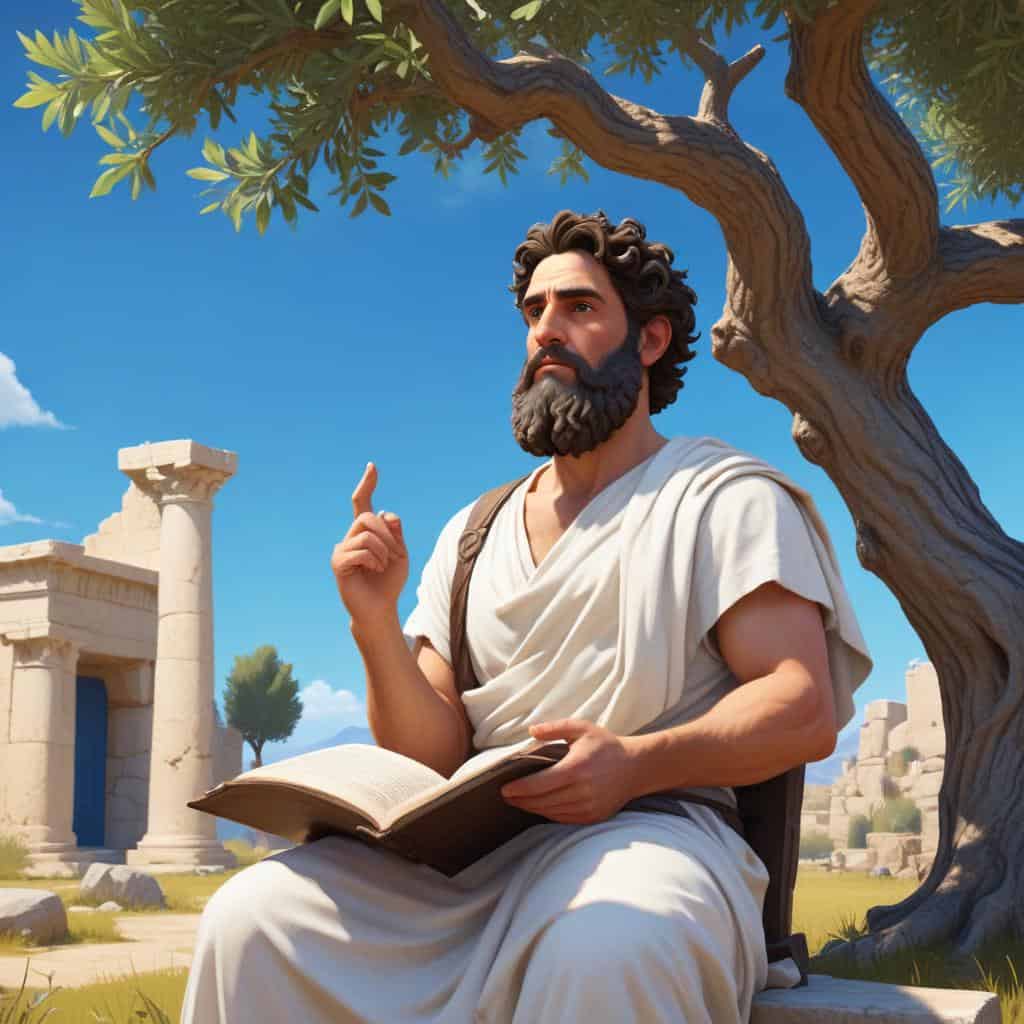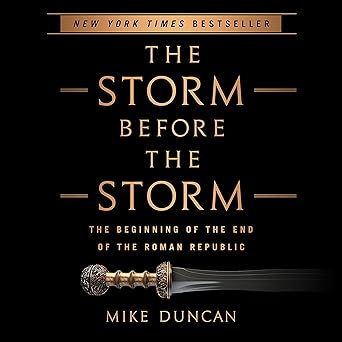The Roman Republic was a period in ancient Rome from 509 BC to 27 BC. It was a time of Roman government before the Roman Empire. The Republic was governed by elected officials and a Senate. The Republic saw the rise of famous figures such as Julius Caesar and Cicero. The Republic eventually fell due to internal strife and the rise of powerful generals.
Summary List
- Rome was originally ruled by kings until 509 BC when the Roman Republic was established.
- The Roman Republic was a form of government where power was held by the people and their elected representatives.
- The Roman Republic had a system of checks and balances to prevent any one person from becoming too powerful.
- The Roman Republic was involved in numerous wars and conquests, expanding its territory and influence throughout the Mediterranean.
- The Roman Republic eventually fell in 27 BC when Octavian became the first Roman Emperor, leading to the start of the Roman Empire.
Games
Learning Modules
Overthrow of the Etruscan monarchy - 509 BC
In 509 BC, Rome saw the dramatic overthrow of the Etruscan monarchy, marking the birth of the Roman Republic. This pivotal event reshaped the course of Roman history, ushering in a new era of political and social change that would have lasting implications for the ancient world.
I Want To Learn This!Battle of Silva Arsia 509 BC
The Battle of Silva Arsia in 509 BC was a pivotal conflict between the Roman Republic and the Etruscan city of Veii. Fought on the banks of the Tiber River, this fierce battle ultimately led to the defeat of the Etruscans and solidified Rome's position as a dominant power in the region. It marked a turning point in Roman history and set the stage for the Republic's future expansion and conquests.
I Want To Learn This!The Roman Senate is established - 509 BC
In 509 BC, the Roman Senate was established, marking a pivotal moment in the history of Rome. Comprised of influential citizens, the Senate became a crucial institution in governing the republic, shaping the course of Roman politics and law for centuries to come.
I Want To Learn This!Adoption of the Roman Constitution - 509 BC
In 509 BC, the adoption of the Roman Constitution marked a turning point in Roman history. This new system of government established a republic, with checks and balances to prevent any one individual from gaining too much power. It laid the foundation for the rise of Rome as a dominant force in the ancient world.
I Want To Learn This!Conflict with the Gauls and the sack of Rome (390 BC)
In 390 BC, Rome faced a devastating conflict with the Gauls, resulting in the sack of the city. The Gauls, fierce warriors from the north, brought chaos and destruction to Rome, leaving the city in ruins. This event marked a significant turning point in Roman history and their determination to rebuild and strengthen their empire.
I Want To Learn This!Samnite Wars (343-290 BC)
The Samnite Wars were a series of conflicts between the Roman Republic and the Samnites, a group of tribes in southern Italy. Lasting over five decades, these wars were characterized by fierce battles and shifting alliances, ultimately resulting in Roman dominance of the Italian peninsula.
I Want To Learn This!Battle of Cynoscephalae (197 BC)
The Battle of Cynoscephalae in 197 BC was a decisive conflict between the Roman Republic and the Macedonian Kingdom. The battle marked the end of Macedonian dominance in Greece and solidified Roman control over the region. The Roman victory at Cynoscephalae is seen as a turning point in the history of the ancient world, leading to the eventual rise of Rome as a dominant power in the Mediterranean.
I Want To Learn This!Punic Wars (264-146 BC)
The Punic Wars were a series of three wars fought between Rome and Carthage from 264-146 BC. These conflicts were fueled by power struggles, trade disputes, and territorial ambitions, ultimately resulting in the destruction of Carthage and the rise of Rome as the dominant power in the Mediterranean.
I Want To Learn This!First Macedonian War (215-205 BC)
The First Macedonian War (215-205 BC) was a conflict between the Roman Republic and the Macedonian Kingdom. Tensions arose over control of Greece, leading to a series of battles and diplomatic maneuvers. The war ended with the Treaty of Phoenice, establishing Roman dominance in the region.
I Want To Learn This!Julius Caesar’s conquest of Gaul (58-49 BC)
Follow Julius Caesar as he embarks on his ambitious conquest of Gaul, battling fierce tribes and expanding the Roman Empire to its greatest extent. Witness his strategic brilliance, military prowess, and political cunning as he overcomes obstacles and solidifies his reputation as a legendary leader.
I Want To Learn This!Roman Civil War (49 BC)
In 49 BC, Rome plunged into chaos as Julius Caesar and Pompey the Great faced off in a brutal civil war for control of the Republic. With political alliances shattered and bloodshed rampant, the fate of Rome hung in the balance as two of the most powerful men in history battled for supremacy.
I Want To Learn This!Battle of Pharsalus (48 BC)
The Battle of Pharsalus in 48 BC was a pivotal moment in Roman history, pitting Julius Caesar against Pompey the Great in a bloody conflict that would determine the fate of the Roman Republic. With cunning tactics and fierce determination, Caesar emerged victorious, solidifying his power and changing the course of history.
I Want To Learn This!Assassination of Julius Caesar (44 BC)
The assassination of Julius Caesar in 44 BC shocked the Roman world. A group of senators, led by Brutus and Cassius, conspired to kill the powerful dictator, fearing his growing influence. The event marked a turning point in Roman history, leading to political chaos and the rise of the Roman Empire.
I Want To Learn This!Second Triumvirate (43 BC)
The Second Triumvirate, formed in 43 BC, was a political alliance between Octavian, Mark Antony, and Lepidus in ancient Rome. This powerful coalition aimed to restore stability and order after the assassination of Julius Caesar, but ultimately led to a power struggle and the downfall of the Roman Republic.
I Want To Learn This!Battle of Actium (31 BC)
The Battle of Actium in 31 BC was a pivotal naval conflict that decided the fate of the Roman Republic. Mark Antony and Cleopatra faced off against Octavian in a dramatic showdown that would ultimately lead to the rise of the Roman Empire. Betrayal, alliances, and power struggles defined this historic battle.
I Want To Learn This!End of the Roman Republic (27 BC)
As the Roman Republic comes to an end in 27 BC, political turmoil, power struggles, and civil unrest engulf the once mighty empire. With the rise of Augustus, the first Roman Emperor, the fate of Rome hangs in the balance as the old ways of governing give way to a new era of imperial rule.
I Want To Learn This!Sulla’s Dictatorship (82-80 BC)
Sulla's dictatorship from 82-80 BC was a period of ruthless power consolidation and political upheaval in ancient Rome. Known for his brutal tactics and sweeping reforms, Sulla's rule marked a turning point in Roman history, setting the stage for further dictatorships and the eventual fall of the Republic.
I Want To Learn This!
Learning Resources
Related Products
*This page contains affiliate links. If you purchase a product through one of them, I will receive a commission (at no additional cost to you). I only ever endorse products that I feel are truly helpful to you in your honourable quest to learn and grow.
Related Videos
Quiz Answers
We post quizzes on social media and post the answers here.




























